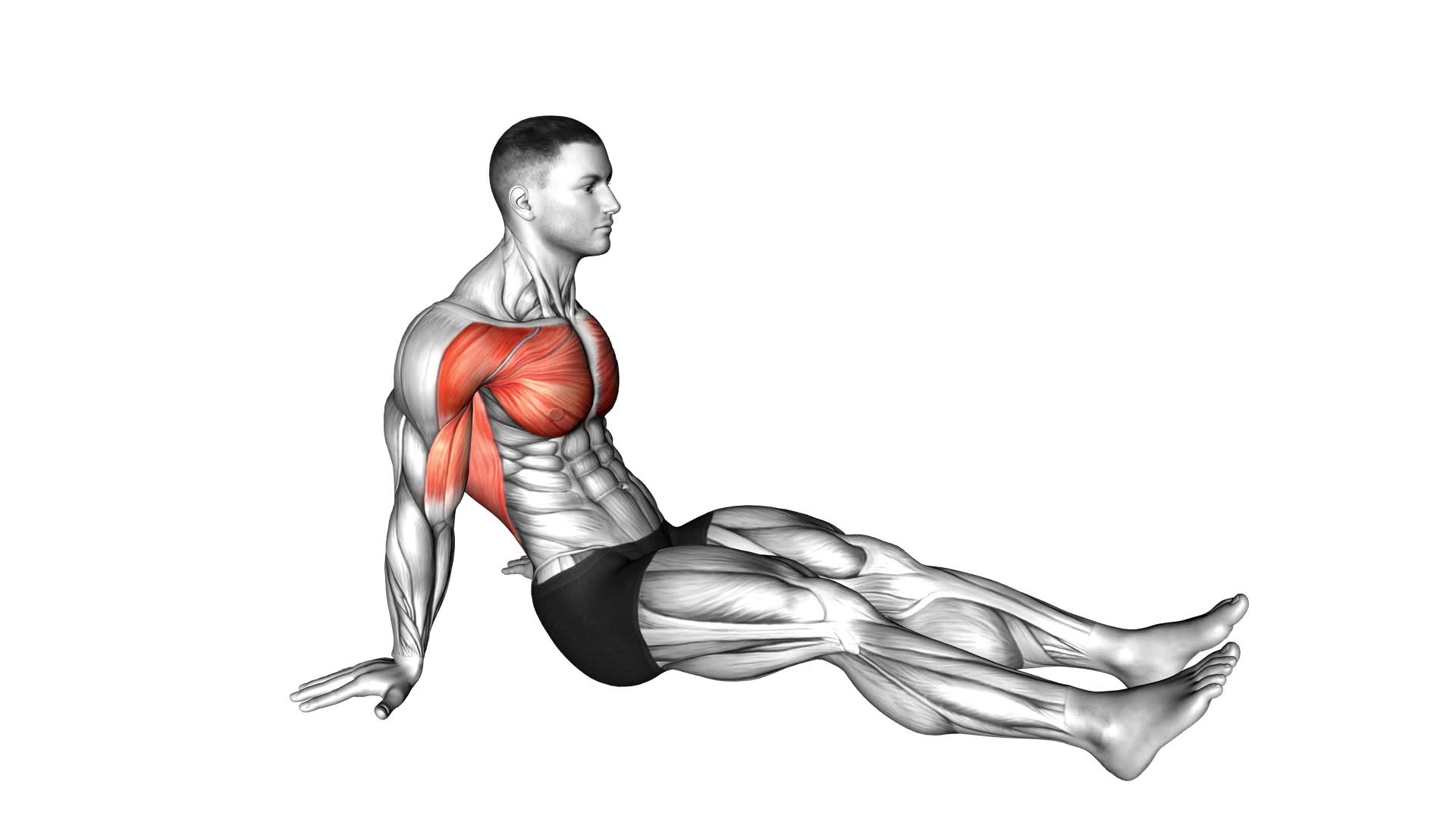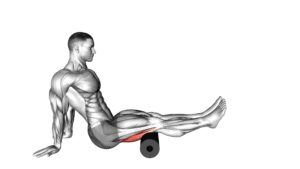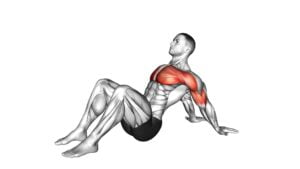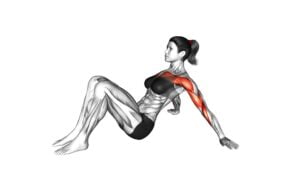Seated Shoulder Flexor Depressor Retractor Stretch – Video Exercise Guide & Tips

Are you looking to improve your shoulder flexibility and strength? Then the Seated Shoulder Flexor Depresor Retractor Stretch is the perfect exercise for you.
Watch This Exercise Video
In this video exercise guide, you will learn the proper form and technique for this stretch, along with modifications for different fitness levels. Avoid common mistakes and get expert tips on incorporating this exercise into your workout routine.
Get ready to enhance your shoulder mobility and achieve better overall fitness!
Key Takeaways
- Improved shoulder flexibility
- Reduced tension in the upper body
- Targets muscles surrounding the shoulder joint
- Increases range of motion in the shoulders
Benefits of the Seated Shoulder Flexor Depresor Retractor Stretch
You will experience improved shoulder flexibility and reduced tension in your upper body through the Seated Shoulder Flexor Depressor Retractor Stretch. This exercise is a great way to target the muscles that surround your shoulder joint and promote better mobility.
Seated shoulder stretches, such as the Seated Shoulder Flexor Depressor Retractor Stretch, work by stretching and elongating the muscles in your shoulders and upper back. By doing this exercise regularly, you can increase the range of motion in your shoulders and alleviate any stiffness or tightness that you may be experiencing.
The Seated Shoulder Flexor Depressor Retractor Stretch specifically targets the muscles responsible for shoulder flexion, depression, and retraction. These movements are essential for performing everyday activities and maintaining good posture. By incorporating this stretch into your routine, you can strengthen these muscles and improve your overall upper body strength and stability.
In addition to improving shoulder flexibility, the Seated Shoulder Flexor Depressor Retractor Stretch also helps to reduce tension in your upper body. Many people carry stress and tension in their shoulders and upper back, which can lead to discomfort and pain. By stretching these muscles regularly, you can release built-up tension and promote a greater sense of relaxation and well-being.
Equipment Needed for the Exercise
To properly perform the Seated Shoulder Flexor Depressor Retractor Stretch, there are a few pieces of essential equipment that you'll need. These include a sturdy chair or bench, a resistance band or towel, and a foam roller or yoga block.
If you don't have access to these items, there are alternative options that can still provide an effective stretch.
Essential Equipment for Exercise
To properly perform the Seated Shoulder Flexor Depressor Retractor Stretch, you'll need a sturdy chair with armrests. This exercise is designed to stretch and strengthen the muscles in your shoulders.
If you don't have access to a chair with armrests, there are alternative exercises you can do that target the same muscle groups. For example, you can try the Standing Wall Stretch, where you stand facing a wall and place your hands on the wall at shoulder height, then lean forward to stretch your shoulders.
Another budget-friendly option is using resistance bands or weights to perform similar stretching and strengthening exercises.
Remember to always consult with a professional before starting any new exercise routine to ensure proper form and technique.
Alternatives to Expensive Equipment
To perform the Seated Shoulder Flexor Depressor Retractor Stretch without expensive equipment, all you need is a sturdy chair with armrests. Instead of investing in costly exercise equipment, you can find affordable alternatives or create your own DIY equipment.
For example, you can use resistance bands or a towel to add resistance to the exercise. Simply loop the resistance band around your arms or hold onto the ends of the towel to create tension as you perform the stretch. These alternatives provide a cost-effective option for achieving the desired results without breaking the bank.
Proper Form and Technique for the Stretch
To perform the seated shoulder flexor depressor retractor stretch with proper form and technique, there are several key points to keep in mind.
First, ensure correct body alignment by sitting tall with your shoulders relaxed and spine straight.
Remember to breathe deeply and consistently throughout the stretch to enhance relaxation and flexibility.
Lastly, be mindful of common mistakes such as hunching your shoulders or straining your neck, and make adjustments as necessary to maintain proper form.
Correct Body Alignment
Ensure proper body alignment by maintaining a straight back and engaging your core during the Seated Shoulder Flexor Depresor Retractor Stretch.
To achieve correct posture and alignment techniques, follow these guidelines:
- Sit on a sturdy chair with your feet flat on the ground.
- Keep your back straight and shoulders relaxed.
- Engage your core muscles by pulling your belly button in towards your spine.
- Gently retract your shoulder blades by squeezing them together.
- Lower your shoulders away from your ears.
- Maintain a neutral neck position by looking straight ahead.
By maintaining correct body alignment, you can maximize the effectiveness of the stretch and reduce the risk of injury.
Now that you have established the proper form and technique, let's move on to the next important aspect of the exercise: breathing during the stretch.
Breathing During Stretch
Maintain proper breathing technique while performing the Seated Shoulder Flexor Depresor Retractor Stretch to enhance the effectiveness of the exercise and prevent injury.
Proper breathing techniques during stretching can have a significant impact on your posture. When you inhale deeply and exhale fully, you engage your diaphragm and core muscles, promoting stability and alignment throughout your body. This allows you to maintain a more upright and balanced position while performing the stretch.
In addition, proper breathing can help you relax and release tension in the muscles, allowing for a deeper and more effective stretch. By focusing on your breath and maintaining a steady rhythm, you can optimize the benefits of the Seated Shoulder Flexor Depresor Retractor Stretch and improve your overall posture.
Avoiding Common Mistakes
When performing the Seated Shoulder Flexor Depresor Retractor Stretch, it's important to focus on proper form and technique to avoid common mistakes. To ensure you're getting the most out of this stretch and preventing any potential injury, here are some key points to keep in mind:
- Common misconceptions:
- Avoiding the use of proper warm-up techniques: It's essential to warm up your muscles before attempting any stretch to increase blood flow and flexibility.
- Overstretching: Pushing yourself too far in this stretch can lead to strain or injury. Maintain a comfortable stretch without going beyond your limits.
Modifications and Variations for Different Fitness Levels
To progress or regress the seated shoulder flexor depressor retractor stretch, you can adjust the intensity and duration of the exercise based on your fitness level.
If you're a beginner or have any existing injuries, it's important to modify the exercise to prevent any further harm. One modification you can make is to decrease the intensity of the stretch by reducing the range of motion. Start by gently stretching the shoulder flexors, depressors, and retractors without pushing yourself too far. This will help you gradually build strength and flexibility without risking injury. Additionally, it's crucial to listen to your body and stop if you experience any pain or discomfort.
For those at an advanced fitness level, you can progress the seated shoulder flexor depressor retractor stretch to challenge yourself further. One progression you can try is to increase the duration of the stretch. Hold the stretch for a longer period of time, aiming for 30 seconds or more. This will help improve your flexibility and range of motion. You can also add resistance by using a resistance band or weights to enhance the intensity of the exercise.
As always, remember to maintain proper form and technique throughout the exercise to maximize its effectiveness. By modifying or progressing the seated shoulder flexor depressor retractor stretch, you can tailor it to your fitness level and continue to progress towards your goals.
Common Mistakes to Avoid While Performing the Stretch
Avoiding these common mistakes will help you perform the seated shoulder flexor depressor retractor stretch correctly and effectively. When performing this stretch, it's important to be mindful of the following:
- Incorrect posture: Maintaining proper posture is crucial for achieving optimal shoulder mobility. Avoid slouching or rounding your back during the stretch. Instead, sit up straight with your shoulders relaxed and your chest open.
- Overstretching: While it's important to stretch to improve shoulder mobility, overstretching can lead to injury. Don't force your shoulder into an uncomfortable position or push beyond your limits. Listen to your body and stretch within a comfortable range of motion.
- Lack of warm-up: Before performing any stretching techniques, it's essential to warm up your muscles. Engage in light cardiovascular activity or dynamic stretches to increase blood flow and prepare your shoulders for the stretch.
- Insufficient duration: To reap the benefits of the seated shoulder flexor depressor retractor stretch, hold the stretch for an adequate amount of time. Aim for at least 30 seconds to allow your muscles to relax and lengthen.
Tips for Incorporating the Exercise Into Your Workout Routine
To effectively incorporate the seated shoulder flexor depressor retractor stretch into your workout routine, follow these tips.
- Consider incorporating modifications to suit your fitness level. If you're a beginner, start with a lighter resistance band or no band at all, and gradually increase the resistance as you become more comfortable with the exercise. On the other hand, if you're more advanced, you can use a heavier resistance band or even add dumbbells to intensify the stretch.
- Perform the stretch after your workout. Stretching at the end of your workout routine can help improve flexibility and cool down your muscles. This can aid in reducing muscle soreness and promoting overall recovery.
- Remember to listen to your body and adjust the intensity of the stretch accordingly. Stretching should never cause pain or discomfort. If you experience any discomfort, decrease the intensity or stop the exercise altogether.
Incorporating this seated shoulder stretch into your workout routine offers numerous benefits. It helps improve shoulder mobility, increases flexibility in the chest and shoulders, and enhances posture. Additionally, stretching promotes blood flow to the muscles, which can aid in muscle recovery and reduce the risk of injury.
Frequently Asked Questions
How Long Should I Hold the Seated Shoulder Flexor Depresor Retractor Stretch?
To improve your shoulder flexibility, it's important to know how long to hold the seated shoulder flexor depressor retractor stretch.
Stretching techniques vary, but for this particular stretch, it's recommended to hold it for 20-30 seconds. This duration allows your muscles to relax and lengthen, increasing your range of motion.
Remember to breathe deeply and focus on maintaining good posture during the stretch.
Can I Perform This Stretch if I Have a Shoulder Injury?
If you have a shoulder injury, it's important to consider modifications for the Seated Shoulder Flexor Depresor Retractor Stretch.
While this stretch may not be suitable for everyone with a shoulder injury, there are alternative stretches that can help improve shoulder mobility and flexibility without causing further discomfort or pain.
It's best to consult with a healthcare professional or a certified trainer who can provide personalized guidance and suggest appropriate stretches for your specific condition.
Is It Necessary to Warm up Before Doing This Stretch?
To improve your shoulder flexibility and avoid injury, it's essential to warm up before performing any stretching exercises.
Warming up increases blood flow to the muscles, making them more supple and less prone to strains or tears.
It also prepares your body for the physical demands of the stretch, allowing you to achieve better results.
Can I Do This Stretch if I Have Lower Back Pain?
Yes, you can modify this stretch if you have lower back pain. It's important to listen to your body and not push yourself too far.
You can try alternative stretches for lower back pain, such as the cat-camel stretch or the child's pose. These stretches can help relieve tension in the lower back and promote flexibility.
Remember to always consult with a healthcare professional before starting any new exercise routine, especially if you have pre-existing conditions.
How Often Should I Incorporate This Stretch Into My Workout Routine?
When it comes to incorporating this stretch into your workout routine, it's important to consider the benefits of the shoulder flexor stretch.
By doing this stretch regularly, you can improve your shoulder mobility and flexibility.
It's recommended to include this stretch in your routine at least two to three times a week.
Remember to listen to your body and adjust the frequency based on your individual needs and goals.
Conclusion
Incorporating the seated shoulder flexor depressor retractor stretch into your workout routine can provide numerous benefits, such as improving flexibility and range of motion in the shoulders.
This exercise requires minimal equipment and can be modified to accommodate different fitness levels.
By practicing proper form and avoiding common mistakes, you can maximize the effectiveness of this stretch.
Consider adding it to your routine to enhance your overall shoulder strength and mobility.

Author
Years ago, the spark of my life’s passion ignited in my mind the moment I stepped into the local gym for the first time. The inaugural bead of perspiration, the initial endeavor, the very first surge of endorphins, and a sense of pride that washed over me post-workout marked the beginning of my deep-seated interest in strength sports, fitness, and sports nutrition. This very curiosity blossomed rapidly into a profound fascination, propelling me to earn a Master’s degree in Physical Education from the Academy of Physical Education in Krakow, followed by a Sports Manager diploma from the Jagiellonian University. My journey of growth led me to gain more specialized qualifications, such as being a certified personal trainer with a focus on sports dietetics, a lifeguard, and an instructor for wellness and corrective gymnastics. Theoretical knowledge paired seamlessly with practical experience, reinforcing my belief that the transformation of individuals under my guidance was also a reflection of my personal growth. This belief holds true even today. Each day, I strive to push the boundaries and explore new realms. These realms gently elevate me to greater heights. The unique combination of passion for my field and the continuous quest for growth fuels my drive to break new ground.







